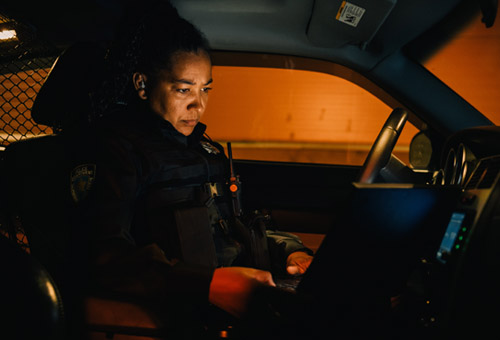


Child Sex Trafficking (CST) is a crime that is hidden yet in plain sight. First responders are often the first system members to make contact with a CST victim. A CST victim has been heavily groomed for system contact, is fearful of their trafficker, and often not forthcoming about their exploitive situation. Deconstruct the crime of CST and identify common scenarios in which you may come in contact with a CST victim. Discover victim-centered contact practices you can implement which are specific to CST victims. Recognize how to secure vital evidence which may only be available during your initial contact with the victim. Practice group exercises and develop contact and response plans to common scenarios you may encounter.

Learn basic techniques and strategies to enhance the likelihood of obtaining information from possible victims of child sex trafficking. Compare and contrast typical child sexual abuse cases with child sex trafficking (CST) cases and address the different points of entry into the criminal justice and welfare system for CST victims. Understand various disciplines' roles and responsibilities and how they can contribute to a positive outcome of the CST case. Examine question strategy, interview dynamics, language use, and interview suggestions. Discuss the business model of child sex trafficking as it relates to a variety of crimes, including the use of child sexual abuse material (CSAM).

This is an advanced course. Please make sure you meet the prerequisites before registering. Develop the skills and techniques to conduct developmentally appropriate forensic interviews with victims of child sex trafficking. Learn the differences between interviewing children in child abuse cases and interviewing child sex trafficking victims. Review victim-centered interview methodology with special emphasis given to understanding the factors contributing to child sex trafficking victimization and the impact on development and effects of trauma. Learn to gather information regarding the use of technology in the child sex trafficking business model and the multitude of crimes that traffickers commit, including the use of child sexual abuse material (CSAM).

Child Protective Services (CPS) case workers encounter child sex trafficking victims during and following missing events in which extensive exploitation is occurring or has occurred. Examine when CPS has jurisdiction and a duty to investigate trafficking cases, along with why and how children go missing from care. Identify vulnerabilities and recognize factors which indicate sex trafficking. Often these recovered missing or abducted children do not disclose their exploitation when recovered or encountered by CPS. Analyze the bond the victim has with the trafficker and discover why disclosing is difficult for children. Identify approaches to protect children when you suspect trafficking but have no disclosure from the victim. Lastly, develop opportunities to collaborate with law enforcement and other professionals to identify and support CST victims.

What do we really know about the dynamics of commercial sexual exploitation of children (CSEC) when a caregiver or family member is directly selling sex with their child for profit? This webinar will explore the commonalities found in victims of family-facilitated CSEC compared to third-party CSEC. The presenter will delve into the identity and modus operandi of familial traffickers, and examine the challenges of family-facilitated CSEC victim identification and long-term outcomes.

Prosecuting sex trafficking of minor cases is difficult, in part because victims are unstable. Join us for this webinar to discuss building an investigation that allows the prosecutor to go to trial, even if the victim is unable to testify.

Gain a better understanding of the child pornography collector and dispel the “it’s just pictures” myth. Discussion will include an overview of studies highlighting the potential correlation between those who collect child pornography and those who molest children, and hear of the devastating and long-term impact on victims. You will learn about the benefits of child pornography investigator’s participation in a multidisciplinary team response, and the role of Mandated Reporters.

911 Telecommunicators are the FIRST responders. They take the call for help and ensure officers are dispatched armed with information and a sense of urgency. This webinar will increase comprehension about the hidden nature of child sex trafficking (CST) and provide a better understanding of the crime of CST and other crimes which intersect with it. The types of calls a dispatcher will receive related to CST will be examined with clear steps which should be taken. The vital role 911 telecommunicators play in identifying CST victims and ensuring they are rescued will be assessed.

Gain a basic understanding of gang dynamics and the movement of gangs into the trafficking of children. Recognize the similarities and differences between gang related and gang motivated child sex trafficking versus traditional sex trafficking models as relates to recruiting, victimization, control and the methods of combating gang trafficking.

Investigating a child sex trafficking case while recognizing the need for advocacy throughout the process can be a challenge both for law enforcement and for advocates. Explore the different perspectives each bring to their contacts with victims. Identify 5 core values of partnership which will enable you to have a successful and productive team as you serve the most vulnerable of victims. Examine a victim’s perspective of a law enforcement-led advocacy team and hear how it impacted her life.
